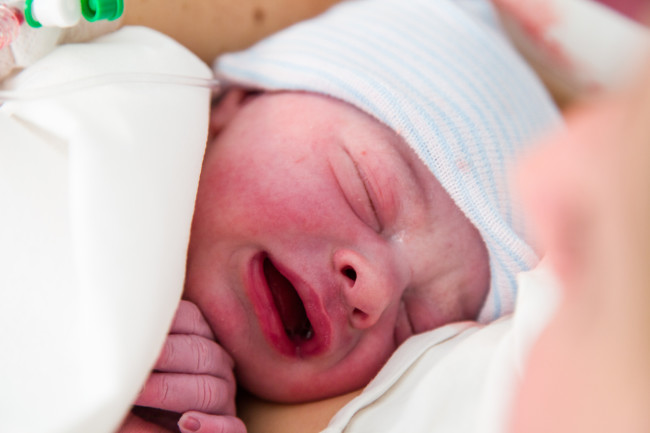The importance of skin to skin and the benefits of it for both mother and baby are so often overlooked in the private sector. Government hospitals have made such progress in ensuring that mothers and babies remain together immediately after birth whether a natural or caesarean section birth has taken place. Skin to skin has shown to be so beneficial in the initiation of breastfeeding practices that it is a shame this practice is not taken more seriously in most private hospitals. The excuses as to why skin to skin is not practiced are too often the same and just as often unnecessary. It is important to address these excuses as the hours immediately after birth are vital in both the child and mothers life. These are common barriers for skin to skin contact:
Concern that the baby will get cold
The warmth from the mother’s body will be transferred to the baby during skin to skin and a blanket can be placed over the mother and baby if the temperature in the room is low. Babies that are placed skin to skin immediately after birth generally have better temperature regulation.
The baby needs to be examined
The only time the baby needs to be taken off the chest may be for weighing which can be done after one hour of skin to skin contact. Most other examinations can be done with the baby on the mother’s chest as this contact helps to stabilise the baby’s breathing and heart rate.
Mom needs to be stitched
The baby can remain on the chest during this process. This will have a calming effect on the mom and also reduces baby’s crying, so stress and energy use are kept to a minimum.
Baby needs to be cleaned
This is not completely necessary as the baby can just be wiped down. If the mother is the first person to hold the baby, bonding occurs and the baby is able to find its way to his mother’s breast and self attach. This initial period will also help the mother to pick up on feeding cues from her baby which will help with future breastfeeding practices. The moments after the birth of a baby are precious to the mother and to be separated from her baby does more harm than good. It is important that hospital staff are made aware of the desire to practice skin to skin. About me and skin to skin: While working in the government sector for two years I did a lot of education to nursing staff in maternity units regarding the importance of skin to skin contact. Once they themselves got the opportunity to see the benefits that it had on initiating feeding, calming the mother, aiding milk production and stabilising heart rate, it very quickly became a non negotiable practice. Breastfeeding and delivery practices have always been a huge interest of mine as the initial hours of the baby’s life are so precious and every mother has the right to spend them with her child.
Laura May Janse Van Rensburg
Latest posts by Laura May Janse Van Rensburg (see all)
- The different types of breastmilk - November 6, 2014
- Rooming-in: How it assists breastfeeding - October 14, 2014
- Inform yourself: The importance of skin to skin - September 29, 2014
-
No Comments" href="https://all4baby.co.za/birth/types-of-birth/2601/c-c-need-know-abour-c-sections/">

To “c” or not: C-section facts you need to know
-
No Comments" href="https://all4baby.co.za/birth/types-of-birth/2571/real-life-unmedicated-vbac/">

Real life: An unmedicated VBAC
-
No Comments" href="https://all4baby.co.za/newborns-0-6-months/newborn-basics/2544/bonding-newborn-baby-always-natural/">

Bonding with your newborn baby – is it always natural?
-
No Comments" href="https://all4baby.co.za/newborns-0-6-months/feeding/2455/different-types-breastmilk/">

The different types of breastmilk


 Saving...
Saving...